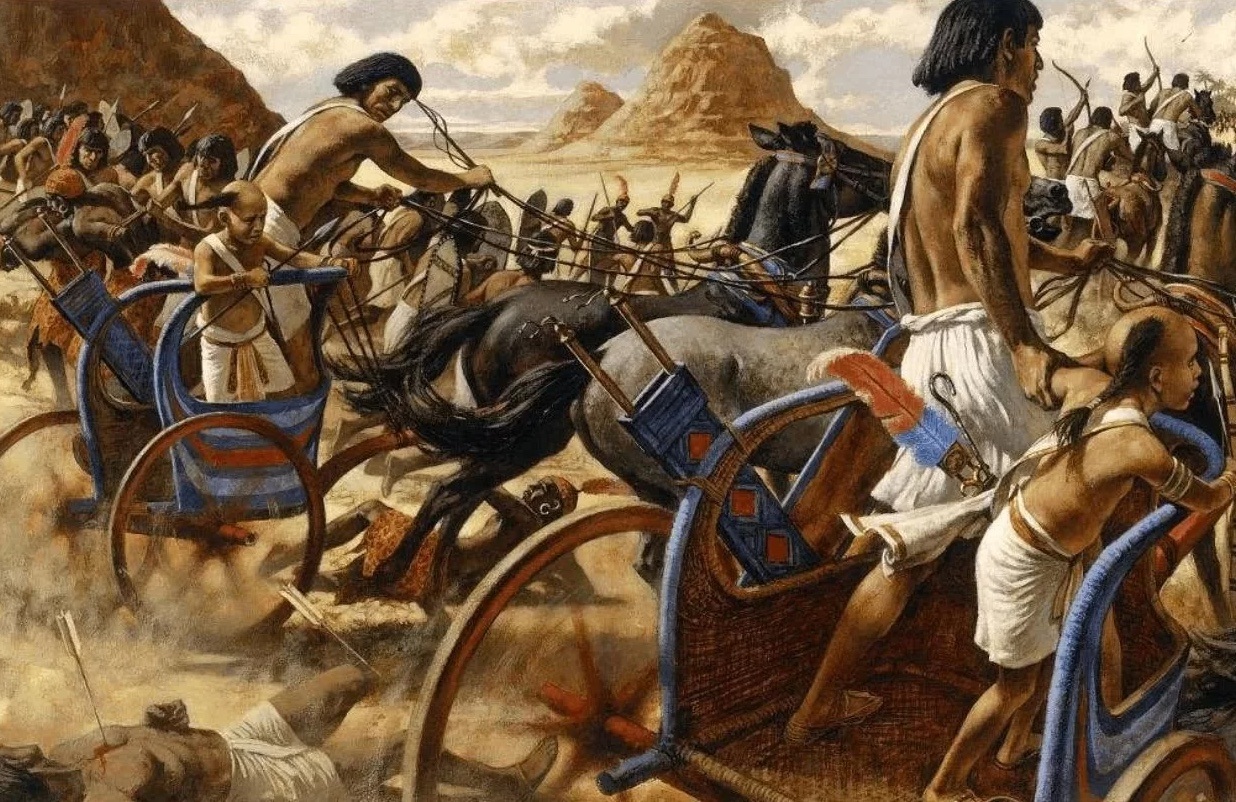Philistine Warfare Tactics: Iron and Chariots

In the ancient Near East, the Philistines emerged as a formidable force, employing advanced military tactics that set them apart from their contemporaries. Their mastery of iron technology and strategic use of chariots played a pivotal role in shaping the dynamics of warfare in the region. This article delves into the Philistine warfare tactics, focusing on their innovative use of iron weapons and chariots.
Iron Age Advancements:
The Philistines are credited with being early adopters of iron technology during the Iron Age. While other civilizations predominantly used bronze for weaponry, the Philistines' use of iron gave them a significant advantage. Iron weapons were more durable and sharper than their bronze counterparts, offering a decisive edge in battle. This technological leap marked a crucial turning point in the arms race of the ancient world.
Chariots as a Strategic Asset:
Chariots were a hallmark of Philistine military strategy. These two-wheeled, horse-drawn vehicles provided the Philistines with both speed and firepower. The mobility of chariots allowed them to swiftly maneuver across the battlefield, making strategic strikes and evading enemy forces. Additionally, chariots served as platforms for archers and spearmen, amplifying the Philistine military's versatility.
The Battle of Aphek (1050 BCE):
One of the notable instances showcasing Philistine military prowess is the Battle of Aphek. Fought against the Israelites, the Philistines strategically deployed their chariots, disrupting the traditional infantry-centered tactics of their opponents. The use of iron weapons further tipped the scales, illustrating the Philistines' adaptability and innovation in the face of conventional warfare.
Tactical Flexibility:
Philistine warfare tactics displayed a remarkable flexibility, adapting to diverse terrains and opponents. Whether engaging in open-field battles or navigating rugged landscapes, the combination of iron weaponry and chariots allowed the Philistines to tailor their strategies to the specific challenges of each encounter. This adaptability made them a formidable force in the complex geopolitical landscape of the ancient Levant.
Legacy and Impact:
The influence of Philistine warfare tactics extended beyond their historical era. The lessons learned from their innovative use of iron and chariots left a lasting impact on subsequent military developments in the region. As neighboring cultures observed and absorbed these advancements, the face of warfare continued to evolve, with iron becoming the dominant material for weaponry.
The Philistines, with their embrace of iron technology and strategic use of chariots, carved a unique niche in ancient warfare. Their contributions not only shaped the military landscape of their time but also left an enduring legacy that influenced the trajectory of military advancements in the ancient Near East. The combination of iron and chariots stands as a testament to the Philistines' ingenuity and tactical brilliance in the annals of history.
At Kid's Study Bible, we are dedicated to making the Bible come alive for young minds. Our platform offers a rich blend of interactive maps, captivating stories, and engaging resources tailored for children. With a focus on accessibility and understanding, we break down major Bible sections, explore geography, and provide a kid-friendly glossary. Join us on this exciting journey of discovery, where we strive to make learning about the Bible a joyful and enriching experience for every child.
Introduction and Background
- Genesis
- Exodus
- Leviticus
- Numbers
- Deuteronomy
- Joshua
- Judges
- Ruth
- 1 Samuel
- 2 Samuel
- 1 Kings
- 2 Kings
- 1 Chronicles
- 2 Chronicles
- Ezra
- Nehemiah
- Esther
- Job
- Psalms
- Proverbs
- Ecclesiastes
- Song of Solomon
- Isaiah
- Jeremiah
- Lamentations
- Ezekiel
- Daniel
- Hosea
- Joel
- Amos
- Obadiah
- Jonah
- Micah
- Nahum
- Habakkuk
- Zephaniah
- Haggai
- Zechariah
- Malachi
- Matthew
- Mark
- Luke
- John
- Acts
- Romans
- 1 Corinthians
- 2 Corinthians
- Galatians
- Ephesians
- Philippians
- Colossians
- 1 Thessalonians
- 2 Thessalonians
- 1 Timothy
- 2 Timothy
- Titus
- Philemon
- Hebrews
- James
- 1 Peter
- 2 Peter
- 1 John
- 2 John
- 3 John
- Jude
- Revelation